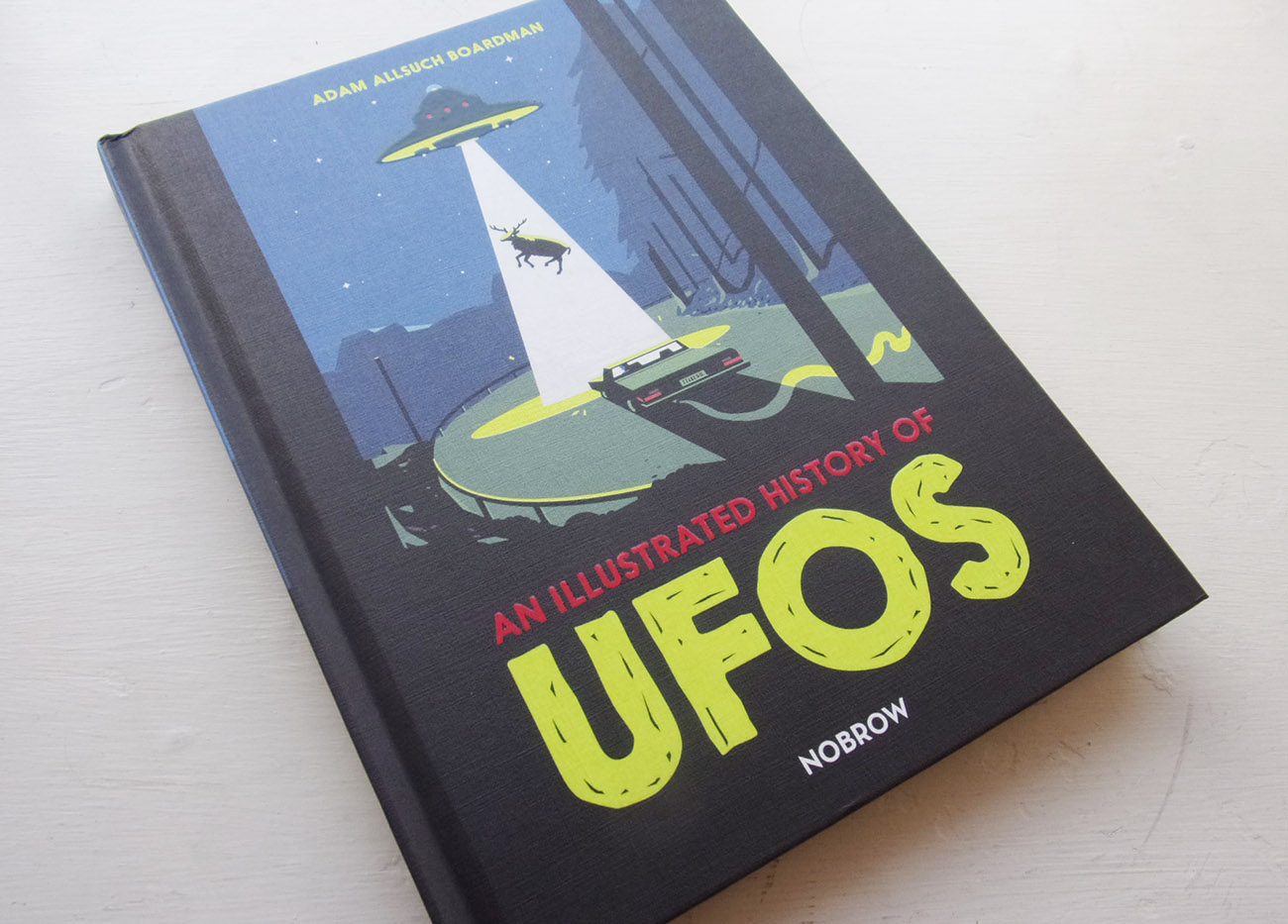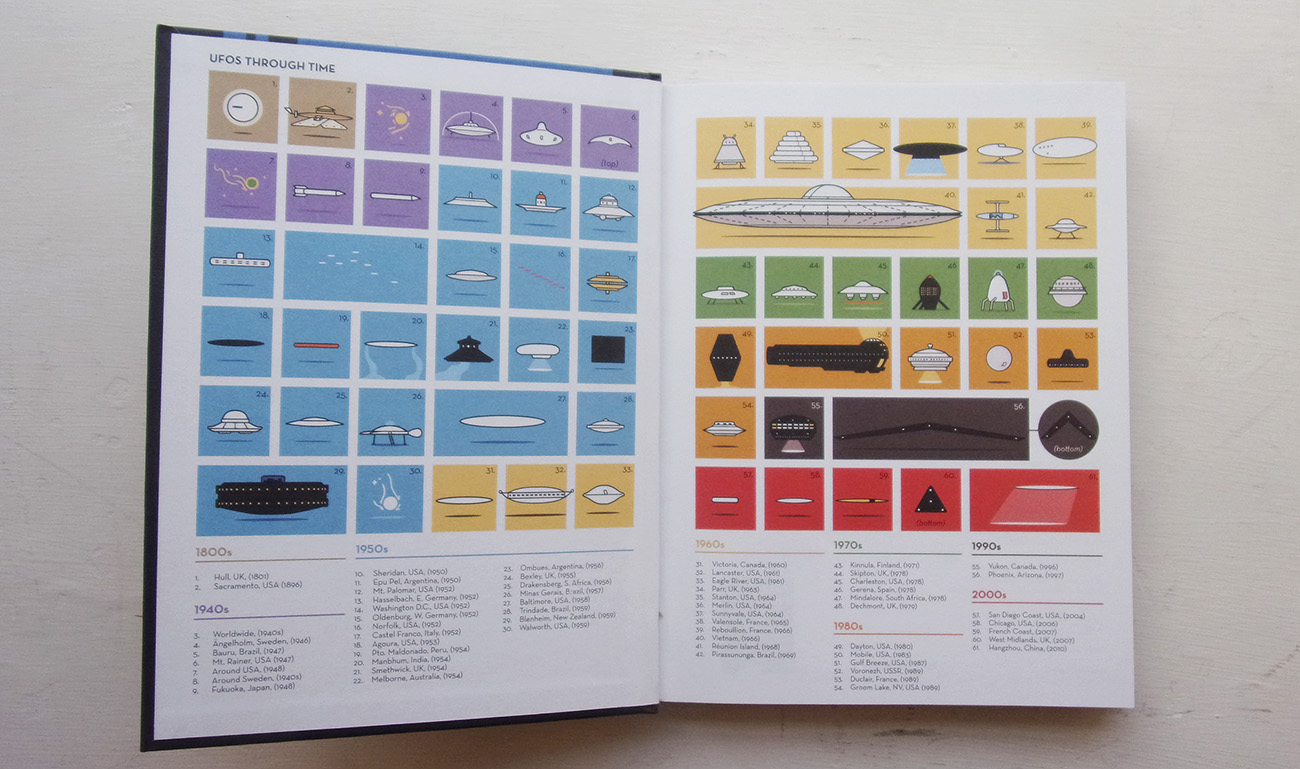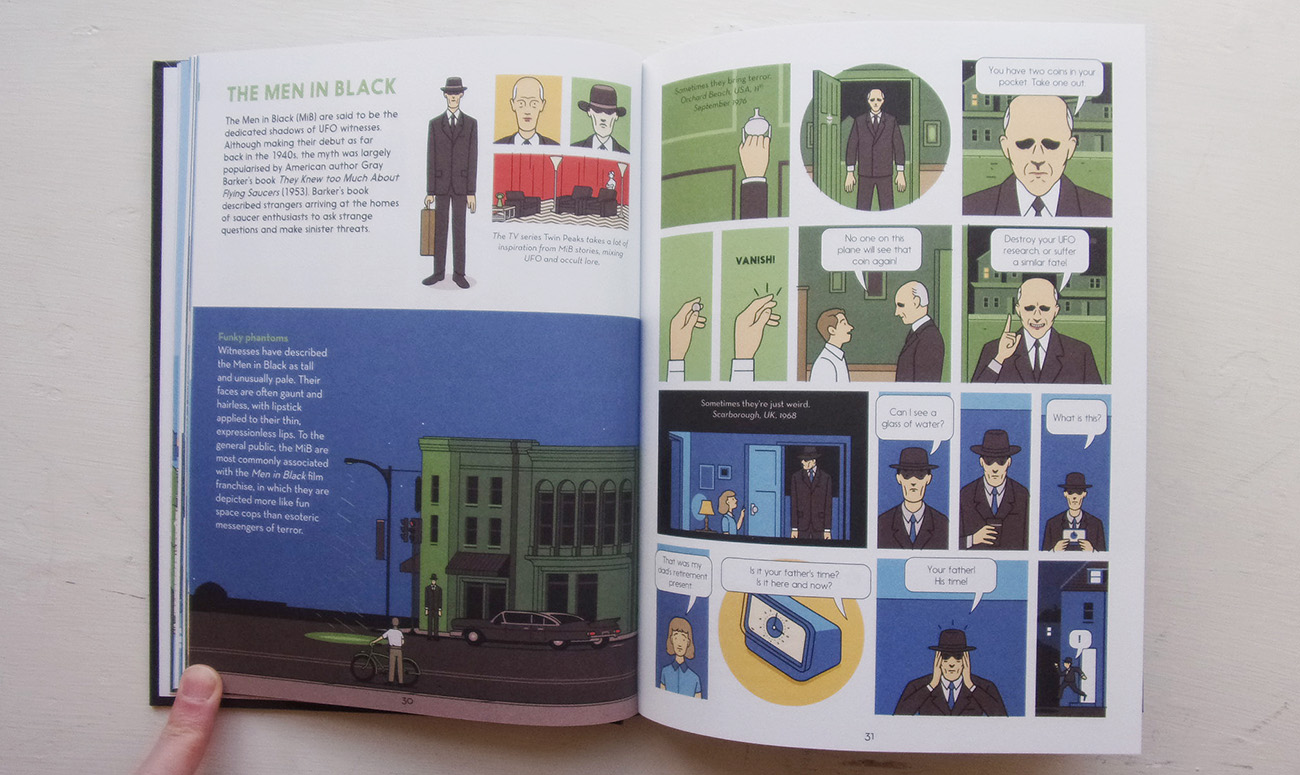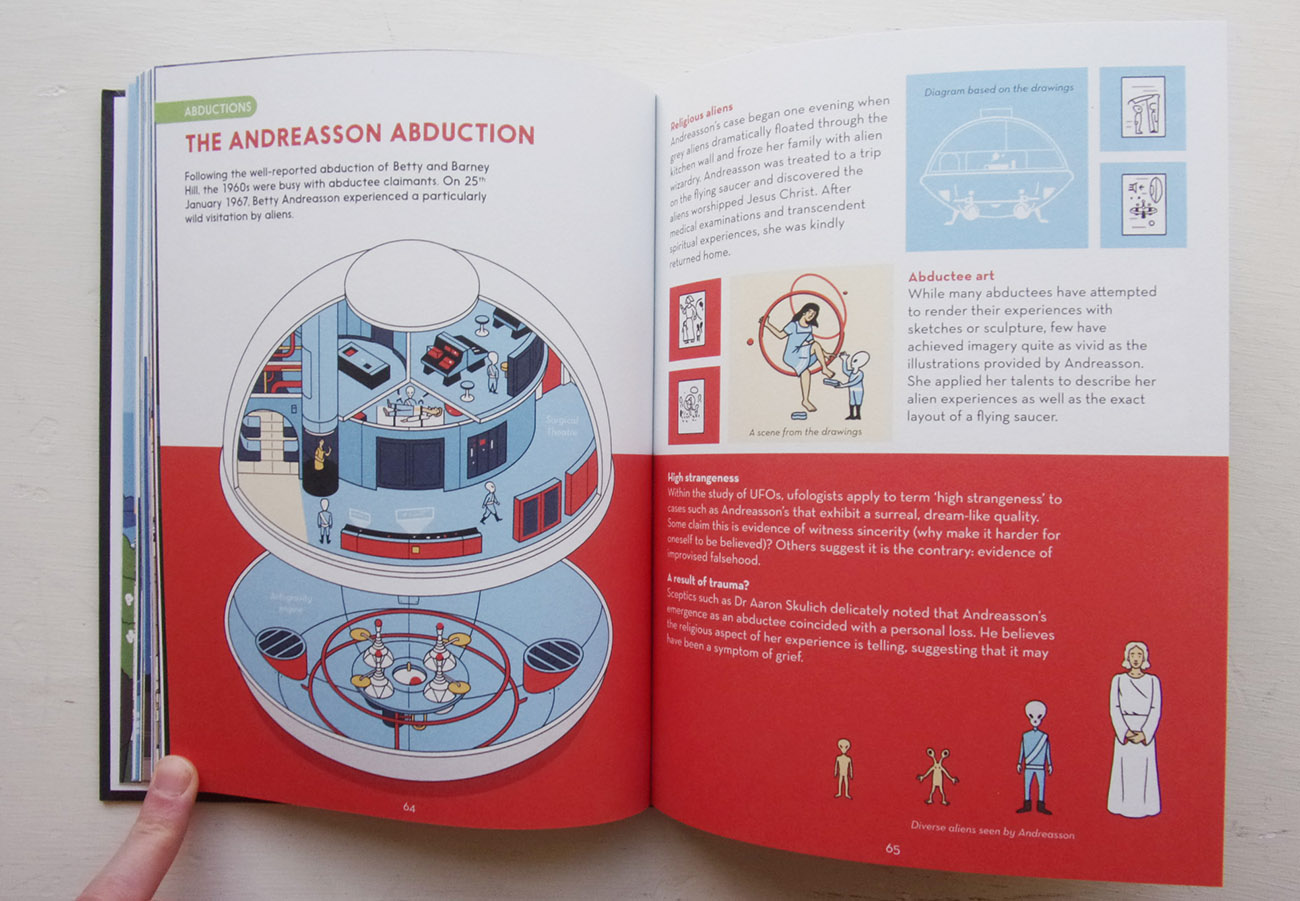By Adam Allsuch Boardman
Published by Nobrow ISBN 9781910620694
Review by Peter Allen

Adam Allsuch Boardman describes himself as an illustrator, writer, animator and tea drinker based in Leeds, UK where he works freelance ‘for mainly national museum exhibits, educational publications and historic businesses… greatly influenced by film and television as well as books, from authors such as Agatha Christie to Isaac Asimov’. This is his second title to be published by Nobrow following An Illustrated History of Filmmaking in 2018, and with nearly half as many pages again, it provides ample room to display Adam’s considerable skills in presenting a great deal of information in clear and simple terms.
As he explains ‘drawings are manifested ideas; and I find that repeatedly drawing something helps me understand it better. I particularly enjoy sharing and clarifying information through the use of clean lines and limited palettes. I find that the fun is in the ‘doing’, so with each new project I like to establish a systemised process and then push it to its limits’.

An Illustrated History of UFOS, is designed to the same layout as its predecessor, suggesting the beginning of an oncoming series. The dramatic cover image sets the mood as forcefully as any B-movie poster, complete with fluorescent green titling it captures the essence of UFOS as they appear in our collective, screen-fuelled imagination. Inside the book, Boardman describes the subject in a more calm, matter of fact tone, like a children’s illustrated encyclopaedia, in such a degree that it’s not quite clear whether he is presenting the subject as fact or fiction – an ambiguity which I find makes for a more enjoyable read.
The book is very well laid-out, making light work of presenting such a concentration of information, and creatively displays a broad range of information as close-ups, lists, spotlights on, comic strips and more, representing many different reference sources: written, TV, film, photography.

It is much to Boardman’s credit that he is able to process such a quantity and diversity of materiel in such a consistent manner, whether depicting a film clip or a newspaper cutting or someone’s account of an encounter, their interpretation is subjected to Boardman’s rigorous process of reduction, stripping them of unnecessary details to match his visual aesthetic of ‘ligne clair’.
The result is a skilful combination of an economy of means and expressive details, flat colours, limited colour palette, minimal line-work. More than Hergé, I find Chris Ware or Adrian Tomine to be a suitable comparison here. Both make strongly descriptive images that combine cinema and comic books forms of representation, which present either a sequence of actions within one frame or across a number of consecutive frames. They both share a calm, almost detached relationship with the subject that also characterises Boardman’s work and which comes from applying the constructed logic of the picture-making process to its limit. The skill is in knowing how to strike the best balance between maximum visual cohesion and expression, too many colours spoils the minimalist colour scheme, too much rigour makes for a soulless result.

Double-page spreads open each chapter and show off best Boardman’s visual skills; particularly the playing off between the absurdity of the scene being described and the very considered, stylised approach to its depiction creating a contrasting dynamic that just works so well. Like Glen Baxter’s surreal combinations of image and text, Boardman’s stylistic understating allows him to blur the lines between real and imaginary and to conjure up scenes in which anything can happen and does so. A spaceship ploughs into a Swedish lake, four glowing disks float in the night sky of a Midwest prairie whilst a freight train crosses the river, two figures walk onto a sandy beach in Japan to inspect a spacecraft lying by the waves edge; the detail in the scenes, the cloud forms, the species of tree, the make of a dumper truck, the sunset on a distant horizon, is given as much attention as a mid-century travel guide (see Brian Cook’s Batsford book jackets or French Railways posters). The strongly stylised forms give an equally solid appearance and presence to both the known and the unknown, like a scene from one of Miyazaki’s animations in which superhuman creatures coexist with the modern world.

Like his first book with Nobrow about filmmaking, An Illustrated History of UFOS is an ideal choice of ground for Boardman to demonstrate his skill at interpreting a subject whose mythology is constructed upon a confusion of fact and fiction. He excels in creating an illusion of objectivity, which provides the cover to give full rein to his imagination and descriptive powers.
As an historical account of the phenomena known as UFOS and as an incredible collection of all the weird and wonderful stories about aliens and flying saucers, which ever way you view the subject, Adam Boardman has evidently worked very hard at making his illustrated account as well designed as possible – a very enjoyable book.